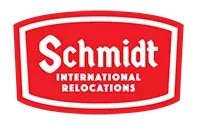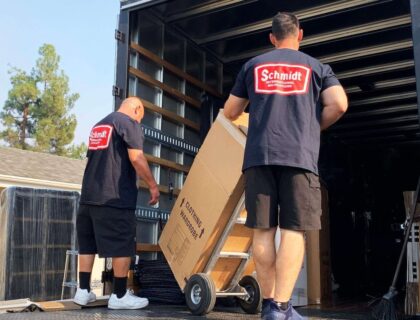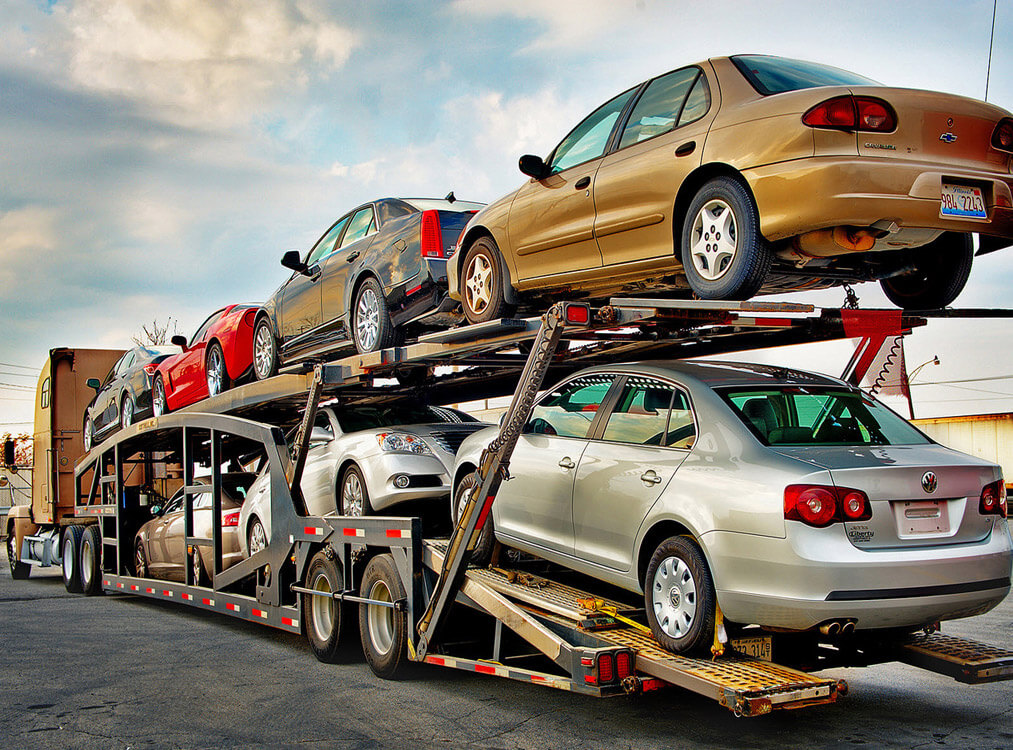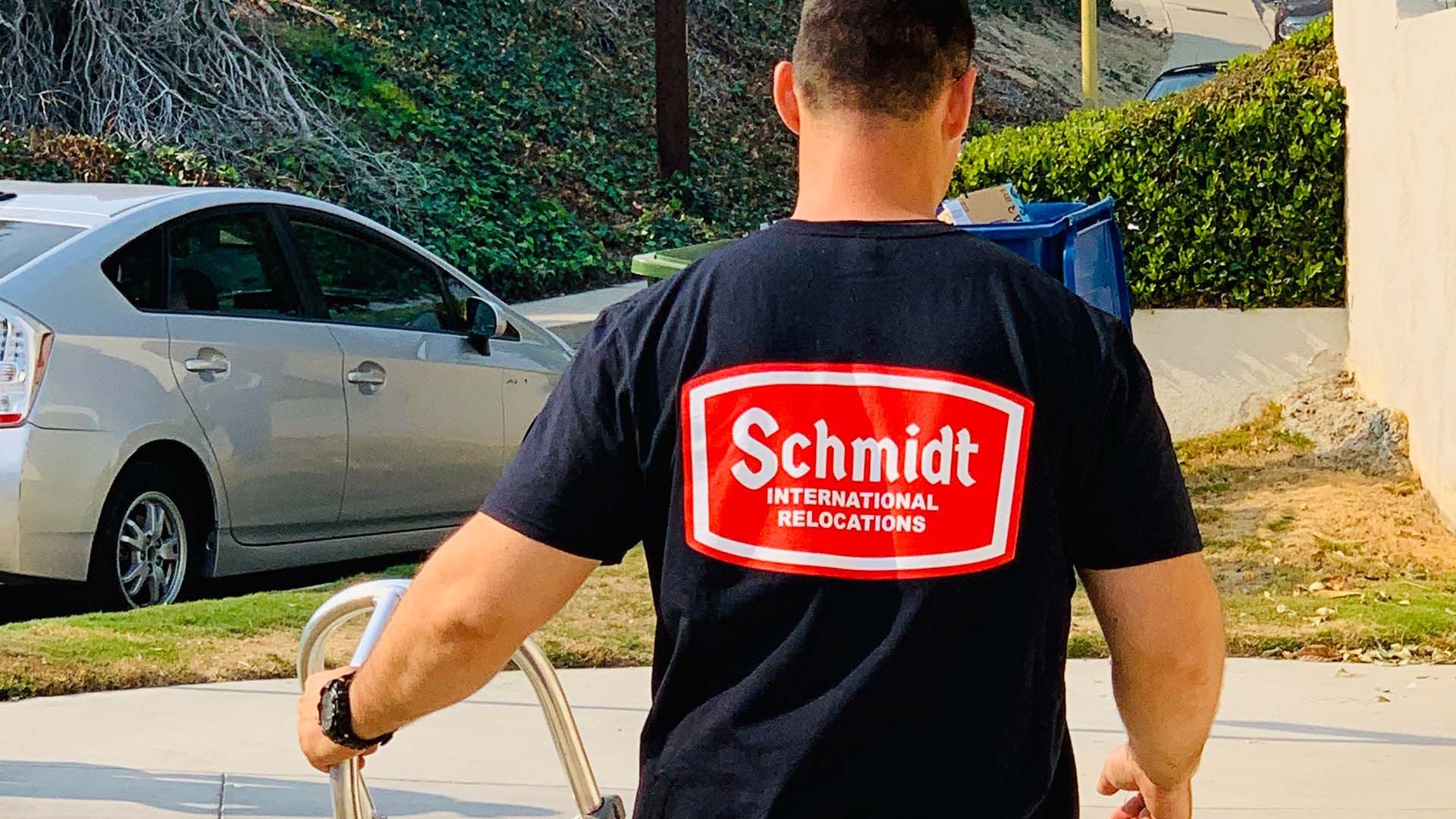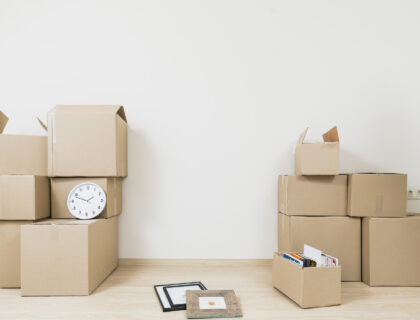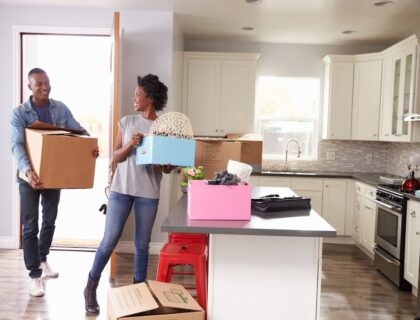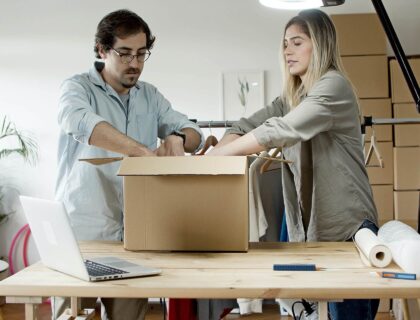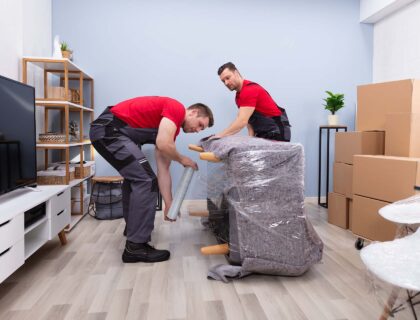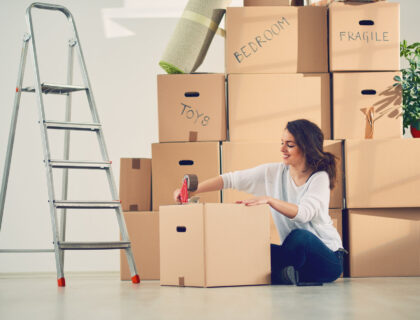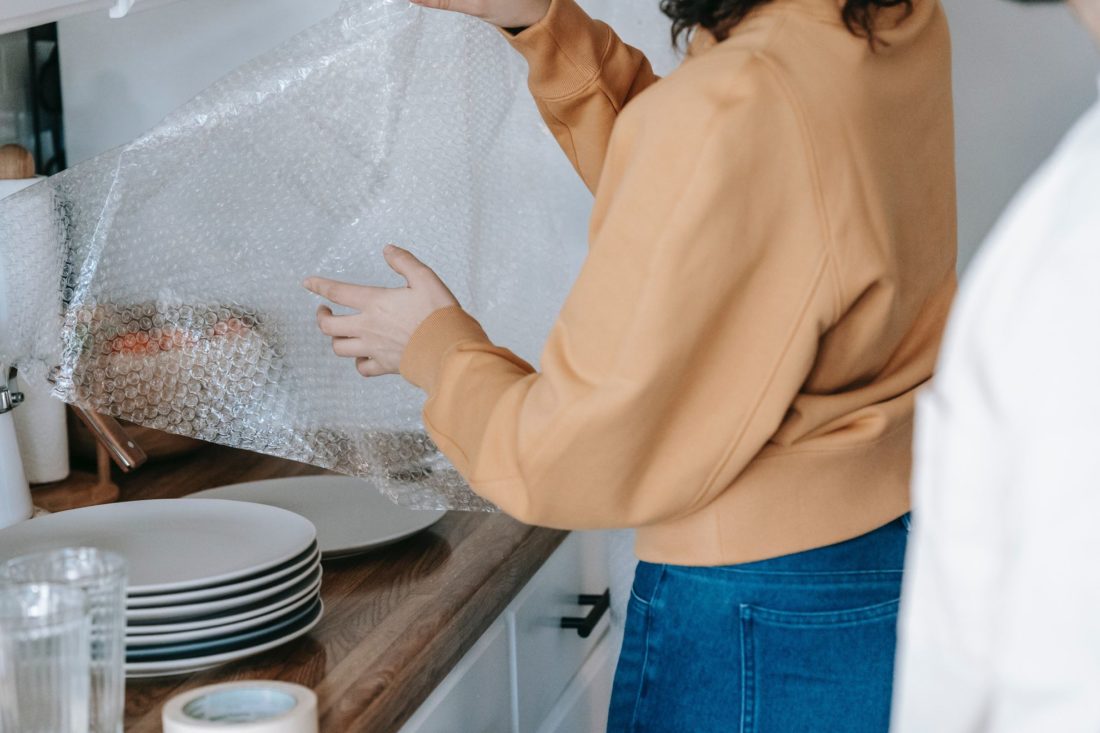

Are you trying to learn how to pack kitchen items for moving? This guide is the secret ingredient you’ve been searching for. Think of it as your kitchen moving checklist, blending practical advice with a pinch of fun. From wrapping wine glasses to securing spatulas, we’ll cover every step to ensure all kitchenware arrives safely at its new international destination. Get ready to box up your culinary world!
How to Pack Kitchen Items for Moving Abroad
Packing kitchen items for a move abroad requires careful planning and attention to detail.
Begin by decluttering – only essential items should join the relocation journey.
Clean everything, from utensils to appliances, ensuring no dirt travels across borders.
Select sturdy boxes and quality packing materials. Wrap each item, particularly fragile ones, with bubble wrap or paper.
Label each box clearly, making unpacking easier in the new kitchen.
Plan a relocation strategy that includes organizing boxes by item type and frequency of use. This will simplify the process and reduce stress when you move abroad. Remember, a little preparation goes a long way in protecting kitchenware.
Prepare the Kitchenware for the Relocation
Preparing kitchenware for relocation is a vital step in ensuring a smooth transition. It’s important to first identify which belongings are essential and which can be left behind. This not only saves space but also reduces moving costs.
Begin by sorting through all kitchen items, categorizing them based on necessity, frequency of use, and sentimental value. Cleaning every piece is crucial. It prevents transporting dirt and helps start fresh in the new location.
Organize kitchenware into categories like cookware, utensils, appliances, and delicate items. This categorization simplifies packing, protects items during transit, and eases the unpacking process.
Declutter and Organize Kitchen Essentials
Decluttering is the first step in organizing the kitchen for moving. Keep items that are frequently used and have specific functions. Donate duplicates or items that haven’t been used in the past year to Goodwill or The Salvation Army. Discard broken or worn-out utensils and appliances.
*Donate the most used kitchenware, such as a set of knives, cutting boards, and shears.
Culinary belongings you should keep are:
- Quality cookware (pots, pans)
- Essential appliances (blender, toaster)
- Favorite utensils (chef’s knife, spatula)
- Special dinnerware (family heirlooms, fine china)
- Practical storage containers.
Clean All Items Before Packing
This move-out cleaning step ensures you don’t bring dirt or grime to your new home. Clean all appliances, utensils, and dinnerware thoroughly. This task might seem time-consuming, but it shouldn’t be treated as a crucial last-minute moving task since it guarantees a hygienic start in the new kitchen. It’s not just about cleanliness. It’s about starting anew in a fresh, clean space.
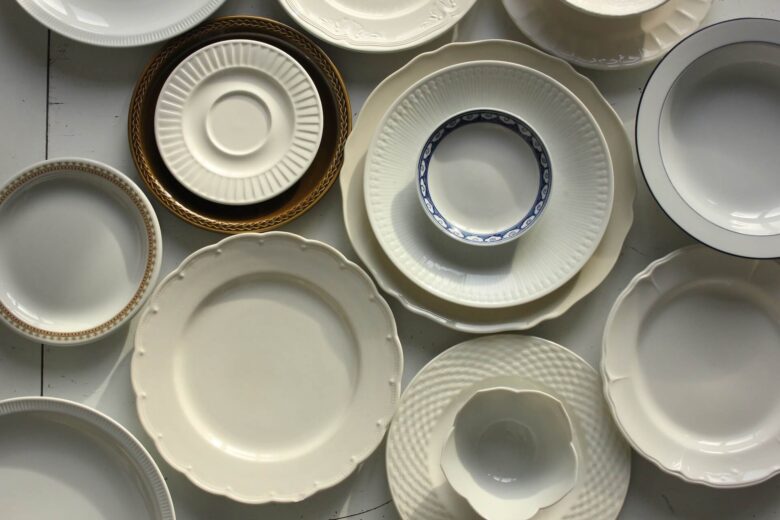
Essential Packing Supplies for Kitchen Items
Preparing for a move requires careful selection of the right packing supplies. To ensure the easiest and safest way to pack, essential materials include:
- Corrugated cardboard boxes,
- Bubble wrap,
- Packing paper,
- Sturdy packing tape.
For added security, use dish pack boxes and glass pack kits, specially designed for delicate belongings. Foam pouches and plastic wrap come in handy for smaller gadgets and utensils. Clearly label each box with markers and labels, aiding in organization. These supplies can be typically sourced from moving supply outlets, online vendors, or local hardware stores.
Obtain Corrugated Cardboard Boxes for Glasses
Corrugated cardboard boxes, with their built-in dividers and cushioning, are perfect for packing glassware for moving. These boxes are a key component in preventing common relocation mistakes that result in damage to fragile items.
They’re not just for wine glasses. These boxes also provide excellent protection for items like mugs and fine porcelain. The extra padding and compartmentalization within these boxes help keep each piece secure, preventing breakage.
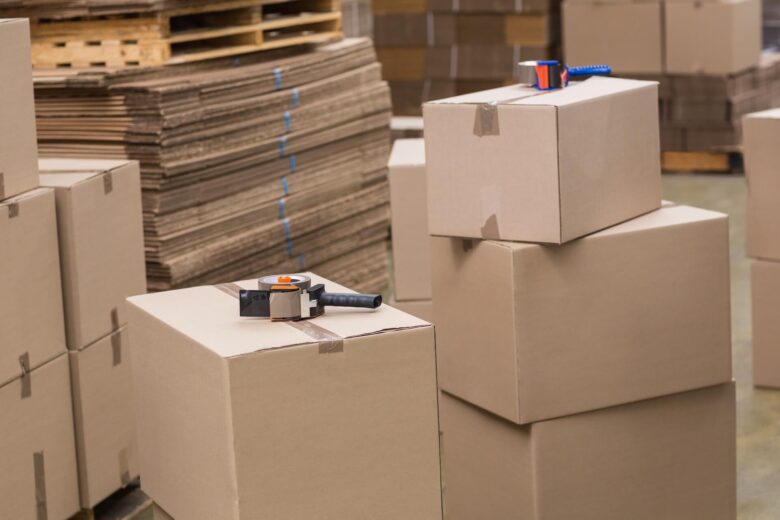
Packing Techniques for Various Kitchen Items
Mastering secure packing techniques is essential when preparing cookware for a relocation across the world. Start by wrapping each item individually with bubble wrap or paper, paying extra attention to sharp edges and delicate parts. Use dish pack boxes for plates and bowls, placing heavier belongings at the bottom and lighter ones on top.
Fill empty spaces with crumpled paper or foam peanuts to prevent movement. For fragile items, utilize cardboard dividers in boxes and cushion each piece thoroughly. Seal all boxes tightly with strong packing tape and label them clearly, specifying contents and handling instructions. Here are additional kitchen packing tips.
Packaging Pots, Pans, and Cookware in Sturdy Boxes
When packaging pots and pans, using sturdy boxes is crucial for protection. Start by wrapping each piece in bubble wrap. Nest smaller pots inside larger ones to maximize space, placing a layer of padding between each to prevent scratches.
For those seeking a simpler method, use large plastic bins with secure lids. They offer an easy, stackable solution. Fill any gaps with crumpled paper or foam peanuts to prevent movement. Ensure the box is not too heavy to lift safely. Label the box clearly, indicating that it contains cookware, to aid in careful handling.
Securely Wrap Plates, Bowls, and Glassware
Securing plates, bowls, and glassware requires careful wrapping and padding. Wrap each plate and bowl individually in paper, then bundle them in groups of four to five with more paper. Stand plates on their edges in the box, as they are less likely to break this way.
For glassware, use bubble wrap for each piece, paying special attention to stems and handles. If you want, you can use corrugated cardboard boxes for added protection. Fill any empty spaces with crumpled paper to prevent shifting. It’s important to avoid overpacking boxes to prevent undue pressure on the contents.
Group Plastic Kitchen Items Into One Box
Grouping plastic culinary essentials into one box is an efficient approach to organizing them for a move. When considering how to pack plastic kitchen items for moving, choose a medium-sized box to prevent it from becoming too heavy. Wrap individual pieces in paper if they are fragile or have sharp edges, and fill any empty spaces in the box with paper to keep everything stable during transit.
Pack Small Kitchen Appliances In Its Original Packaging
If available, place small appliances in their original packaging as it’s specifically designed to protect them. This will make moving internationally easier and less stressful. If the original packaging is not available, choose a box that closely fits the appliance’s size.
Wrap each appliance in bubble wrap, particularly around any protruding parts or fragile components. Secure the wrap with tape. Fill any gaps in the box with crumpled paper. For appliances with removable parts, pack these separately and label them accordingly. Ensure cords are wrapped and secured to avoid tangling.
Label and Organizing Packed Boxes
Effectively labeling and organizing boxes can transform the relocation process. Start by clearly labeling each box with its contents and destination room. Utilize different labeling methods like numbered labels or detailed inventory lists. This helps keep track of belongings and is a great relocation hack.
For organization, group boxes by room or item type. Designate a storage area for boxes. As relocation day approaches, ensure all boxes are stacked safely and in an order that corresponds to the loading plan. Proper labeling and organization minimize stress and confusion, making the transition smoother.
Color-Code Boxes for Easy Unpacking
Color-coding containers are an effective technique, especially when relocating on a low budget. Assign a specific color for each room or category of possessions. For example, if you’re moving kitchen appliances in specific boxes, designate a blue color for them. This system allows for quick identification. Use colored stickers or markers for this purpose. Place a color-coded chart in a visible area both in the old and new home for reference.
Strategically Organize Boxes Inside the Relocation Truck
Strategically organizing cardboard containers inside the relocation truck is crucial for a smooth process. Heavier and larger items, like furniture and larger appliances, should be loaded first and placed toward the front of the truck. Stack lighter boxes on top, avoiding crushing. Keep fragile items secure and away from areas where they might shift or be damaged.
Hiring professional movers who offer reputable moving-by-sea services is a better option. They have the expertise to load and organize the truck efficiently. Their experience ensures that everything is transported safely, reducing the risk of damage and simplifying the entire relocation process. Movers from a company such as Schmidt International Relocations will take this load off your shoulders.
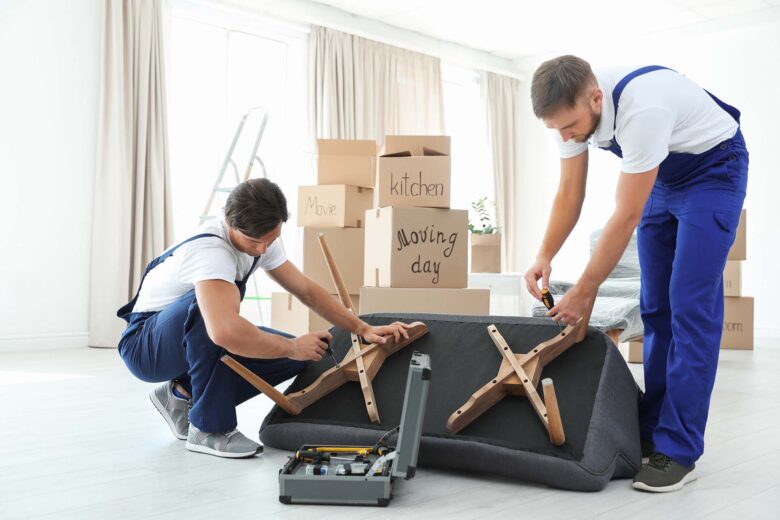
Prepare Large Appliances for the Move
We know that kitchenware doesn’t only include dishes, pots, pans, and glasses. There are also large appliances such as refrigerators, ovens, and dishwashers that have to be relocated safely. The best thing to do is to leave this for the movers from the international moving company. They will arrive with their hand trucks and dollies and load all large items into the truck without a hitch.
The only thing you should do is unplug the cords, clean each appliance thoroughly, and clear the path from the kitchen to the front door. Of course, don’t leave any dishes in the dishwasher or food in the fridge. Everything needs to be empty.
Unpack Kitchen Items Gradually in the New Home
Unpacking items in the new home should be a gradual and organized process to prevent breakage and ensure everything finds its proper place. Start with essentials like cutlery, plates, and daily-use appliances.
For example, carefully unbox and arrange glassware in the cabinets, using cushioning materials to prevent clinking and potential damage. Unpacking should be done at a time when there’s no rush, perhaps a day or two after settling in and slowly adjusting to the new country.
Take the time to thoughtfully place each item, ensuring that the process is calm and methodical. This approach reduces the likelihood of breakage and allows for a more enjoyable setup of the new kitchen space.
Set Up the New Kitchen in Style
Setting up the new kitchen post-relocation offers an opportunity to create a functional and stylish space. Begin the relocation kitchen setup by deciding on the layout. Place frequently used items like pots, pans, and utensils near the stove for easy access. Designate specific areas for different activities – a baking zone, a coffee station, etc.
Utilize drawer organizers and shelf risers to maximize space and maintain order. Consider the flow of the kitchen and arrange items in a way that complements your cooking style. Adding personal touches like plants, artwork, or decorative containers can infuse the space with your unique style, making the new space feel like home.
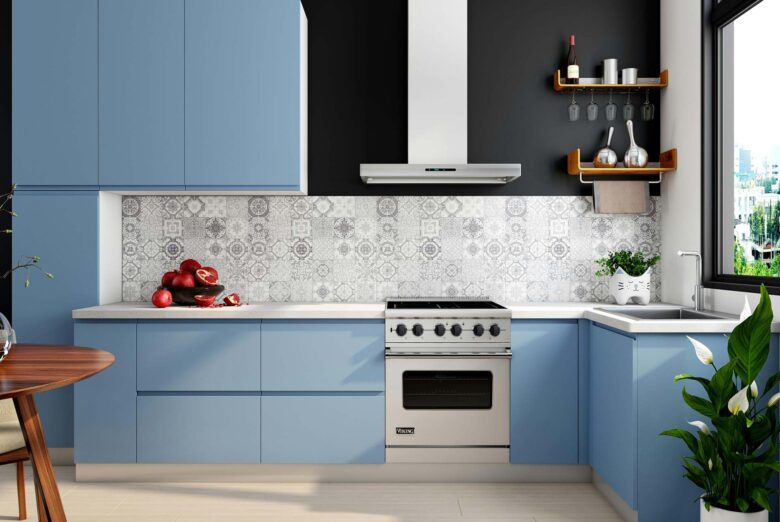
Have the Right Team by Your Side – Reach Out to Schmidt International Relocations
The journey of relocating kitchenware internationally is made significantly smoother with the right techniques. From decluttering and cleaning culinary treasures to using robust boxes and secure wrapping methods, every step is crucial. Organizing and labeling boxes, strategically loading them into the relocation truck, and unpacking gradually in the new home is key to a successful move.
However, the most important aspect is having the right team by your side. Contact us at Schmidt International Relocations for expert assistance. Our packing services are designed to take the stress out of your move, ensuring that your belongings are handled with care and professionalism.
Frequently Asked Questions
How Should I Pack My Dishes to Prevent Them From Breaking?
To prevent dishes from breaking, wrap each plate individually in bubble wrap or paper. Place them vertically in sturdy containers. Use crumpled paper or foam peanuts to fill any gaps, ensuring minimal movement. Label boxes as fragile to alert movers to the delicate nature of their contents.
What Is the Best Way to Pack and Move Large Kitchen Appliances?
For large appliances, clean and dry them first, then secure any movable parts with tape. Wrap them in moving blankets or bubble wrap for protection. Let movers who use a dolly or hand truck transport them safely. It’s advisable to refer to the manufacturer’s guidelines for specific moving instructions.
Can I Pack and Move Perishable Food Items?
Perishable food items should generally not be transported over long distances due to the risk of spoilage. Consume or donate these before the move.
How Do I Organize My Kitchen Items for Easier Unpacking?
Organize utensils, appliances, and dinnerware by category and frequency of use for easier unpacking. Label containers with detailed contents and their designated area in the new space. This approach facilitates efficient and organized setup upon arrival.
Should I Disassemble My Kitchen Furniture for the Move?
Disassembling furniture can make moving overseas more manageable and protect pieces from damage. Remove any detachable parts like shelves or handles and wrap individual components securely. Keep all hardware in labeled bags for easy reassembly.
